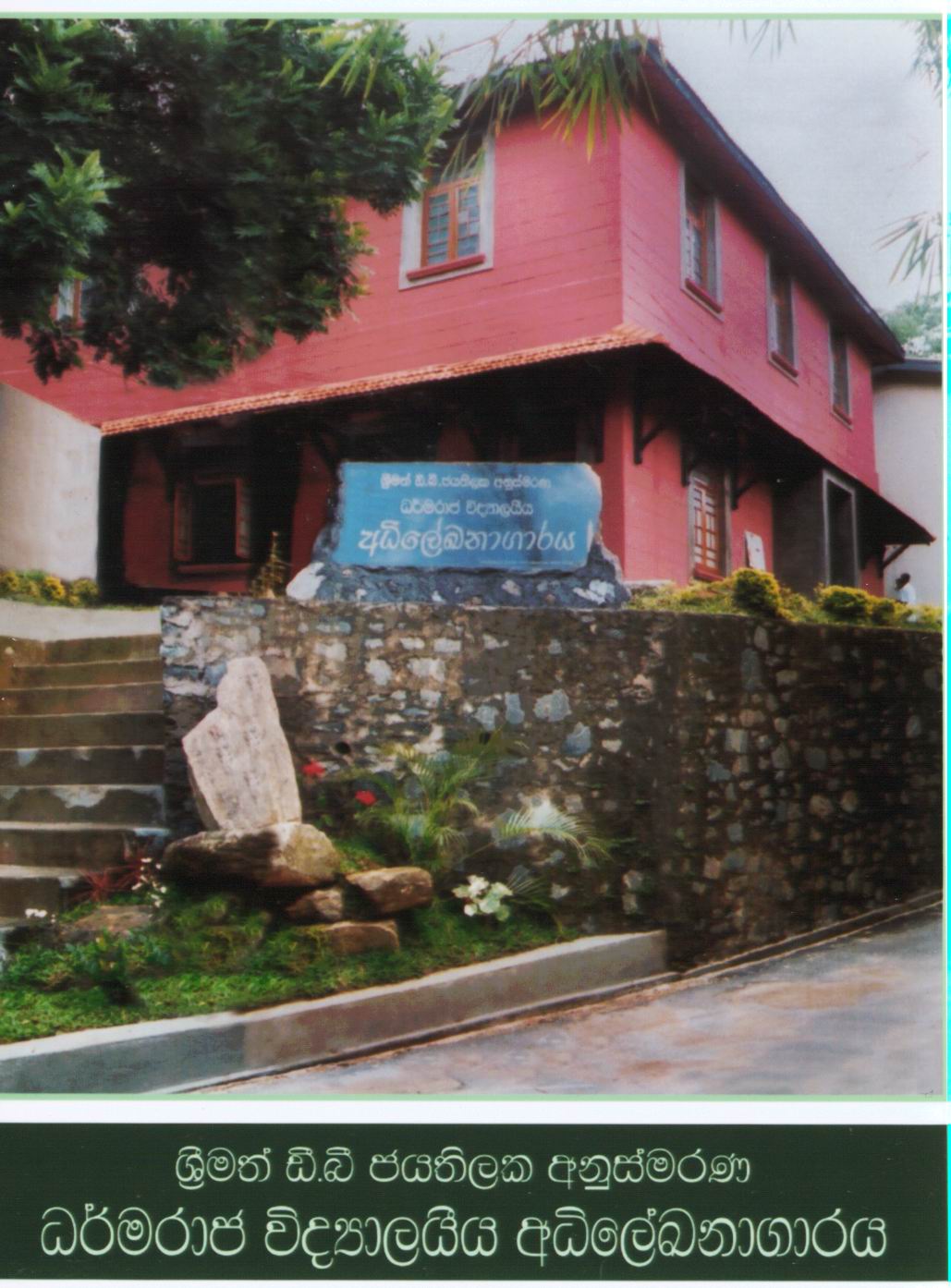Dharmaraja College Archives
Jump to navigation
Jump to search
Sir D.B. Jayatilaka Memorial Dharmaraja College Archives, Kandy
Preserving the History, Values and Traditions of the Dharmaraja College

- Dharmaraja College Archives was established in 2002 with the guidance of the National Archives.
- The Archives collect the documents of Dharmaraja to preserve them for posterity.
- The Archives is the official custodian of the documents of the college.
- Collecting more than 130 years of Dharmaraja history and maintaining it is an enormous task.
- Therefore Dharmaraja College Archives have started this website as a private Wikipedia so that all Rajans can collaboratively complete relevant pages of the College's History. Please find/make the relevant pages for you and update them.
- Please Note: We are improving this site continuously as the data collected from 2002 is to be entered and also new data is being collected. Therefore some of the pages could be empty.
- If you wish to contribute or have comments, please get in touch with the President, Dharmaraja College Archives Foundation through archives.dharmaraja@gmail.com
Value of preserving history from quotations
A people without the knowledge of their past history, origin and culture is like a tree without roots.-Marcus Garvey Study the past and you will define the future. — Confucius We are not makers of history. We are made by history. — Martin Luther King Jr. Those who don't know history are doomed to repeat it. — Edmund Burke A generation which ignores history has no past—and no future. — Robert A. Heinlein If you don't know history, then you don't know anything. You are a leaf that doesn't know it is part of a tree. — Michael Crichton The most effective way to destroy people is to deny and obliterate their own understanding of their history. — George Orwell